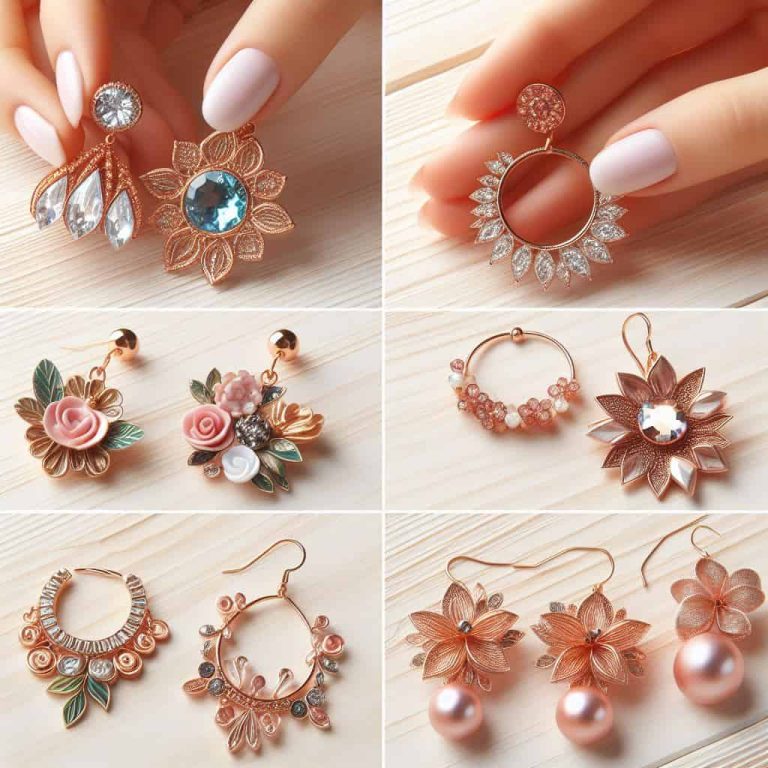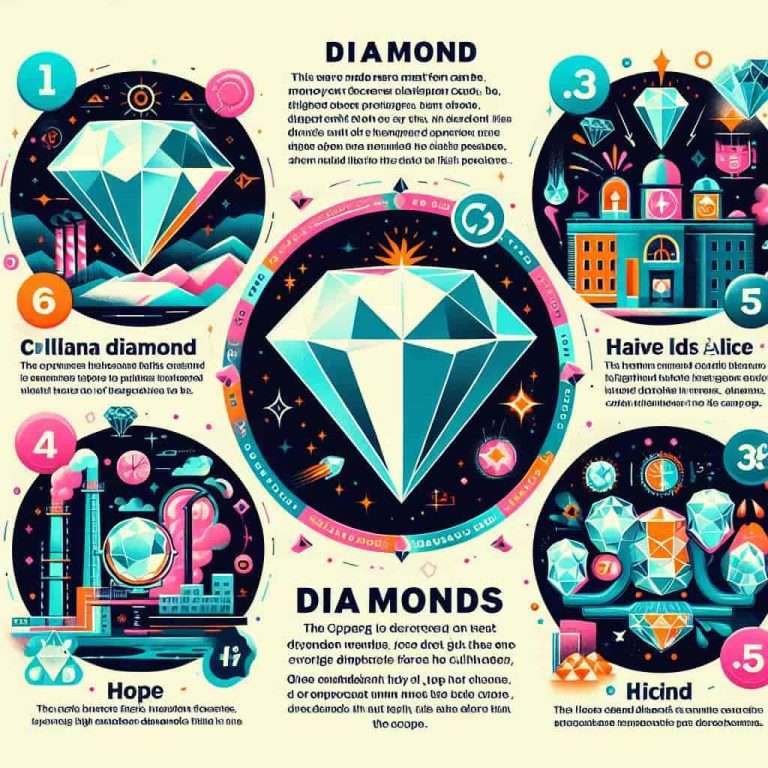13 Diamond Colours Explained: What Color Is the Rarest?
What colour diamonds are you most familiar with?
Clear and colourless diamonds, am I right?
What Colour Diamond Is the Rarest?
Colourless diamonds are the most sought after in the diamond market.

In basic diamond quality evaluation, yellowish or slightly dark diamonds are not favoured by the jewelry industry.
Let’s start off by introducing the rarity of coloured diamonds.
Rare Diamonds Are More Expensive
The rarity index of diamonds is roughly as follows.
*Please consider the below only as a guide.
Rareness of coloured diamonds:
- Red Diamonds (A+)
- Blue Diamonds (A)
- Green Diamonds (B)
- Pink Diamonds (B)
- White Diamonds (B)
- Purple Diamonds (B)
- Violet Diamonds (B)
- Orange Diamonds (B)
- Yellow Diamonds (C)
- Brown Diamonds (C)
- Colourless Diamonds (C)
- Grey Diamonds (D)
- Black Diamonds (D)
Why Do Diamonds Have Different Colours?
The specific colour of a diamond cannot be replicated or produced because it depends on the inclusions in the rough stone.
Colours like red and blue diamonds are so rare that they only exist in the world and are not produced.
However, just because a diamond is coloured, it doesn’t mean that it must be rare.

Colourless and transparent diamonds tend to be marketable and traded higher than coloured diamonds since there is a high demand for them in jewelry.
Some coloured diamonds have a high degree of rarity and are seen as special diamonds.
We’ll look into each colour in detail in a later section.
Standard of Coloured Diamonds
Refer back to our diamond rarity index, for diamonds graded at A and above, they are so rare that it’s likely that even leading jewellers may have never handled them before.
Basically, they are not products you can get in the market.
Coloured diamonds of grade B or higher are often highly regarded, even more so than colourless diamonds. They are considered rare and traded at high prices in major jewelry auctions.
Colours below B are relatively common, and its colour rarity is much inferior to A and B graded diamonds.
When looking at a coloured diamond, keep in mind that there are many other important factors that determine the diamonds value, for example:
- The difference between artificial and natural diamonds
- The presence or absence of processing to create this gemstone
Let’s take a closer look at each coloured diamond, in order of rarity.
Different Coloured Diamonds Explained
I. RED DIAMONDS

Red diamonds are the least produced and are the most rare of all colored diamonds.
Speaking of how rare it is, it is said that there are only about 30 in the world.
As a result, red diamonds will never appear in the general market.

Red diamonds are sometimes referred to as a “phantom diamond” as it is extremely rare that even the most experienced diamond buyer will most likely not have access to it.
Red diamonds have a deep red tint.
The rarity is such that it is believed that there is no red diamond larger than 1 carat.
Its rarity is exceptional compared to other coloured diamonds, and it is the ultimate gemstone that diamond collectors pursue.
II. BLUE DIAMONDS

Blue diamonds, like red diamonds, are extremely rare.
In recent years, it is sometimes said that blue diamonds are more rare than red diamonds, but considering the number in circulation and the largest carat size of a blue diamond that has been discovered up to date (approximately 29 carats), it may be a little less rare than the red diamond.
In the case of a blue diamond, if it is a dark blue shade, the inside should be a greyish color.
Of course, an ideal blue diamond is a product that has a deep blue colour and a high degree of transparency that penetrates to the inside.
However, since the number of blue diamonds available in the world is very small, it is almost impossible to obtain an ideal product.
Most collectors collect items from decades to hundreds of years ago at auctions, and natural blue diamonds are rarely used in jewelry and accessories.
III. GREEN DIAMONDS

As with blue and red diamonds, green in diamonds is a rare colour.
The world-renowned GIA (American Gemological Society) has once said, “Even if you use an advanced gemological test, it is not always possible to correctly judge whether the origin of the colour of a green diamond is natural or artificial.
Due to the small number in circulation, it is difficult to give a value based on a standard colourless diamond.
At least, it is a diamond that is more rare than yellow and brown diamonds.
IV. PINK DIAMONDS

The colour of pink diamonds is seen as a pale red.
Just imagine diluting red paint with water – this would be the difference in brightness and transparency of pink diamonds and red diamonds.
The red diamond introduced earlier is a rare diamond whose pale red colour, which should originally look pink, is extremely strong and distinct.

90% of pink diamonds in the market are originally from Australia’s Argyle mine.
Common sizes of pink diamonds is about 1 carat of raw stone before cutting.
Therefore, pink diamonds with a large carat size are extremely rare.
To date, the Argyle mine has produced 800 million carats of diamonds, but pink diamonds account for only 0.01% of the total.
Natural pink diamonds are so expensive that they rarely hit the general market.
Most of the pink diamonds found on the market are artificial diamonds or diamonds that have undergone special processing.
V. WHITE DIAMONDS
White diamonds are very rare and popular, and they are very valuable colored diamonds.
The colour is not pure white, but it is close to the image of a milky white translucent colour.

White diamonds and colourless diamonds are NOT the same.
Regarding the colour of white diamonds, there are many unclear parts due to its scientific mechanism, and it is very popular because of its mysterious colour.
VI. PURPLE DIAMONDS

Purple diamonds are as rare as red diamonds.
The difference from the violet diamond described below is that it is a reddish purple.
At first glance, it is purple, but it may be considered as a pink diamond by some.
Only a few diamonds are identified as purple diamonds per year.
You can only imagine how rare they are.
Furthermore, considering the durability of the stone, which can be chipped or cracked when a large amount of force is applied to it, a good quality and well-preserved material will have a high rarity value.
VII. VIOLET DIAMONDS

This is a coloured diamond that is characterized by a bluish purple hue.
It’s a colour as rare as purple diamonds, and there are very few in the market.
It is a rather dark colour unlike the vivid blue-purple. It is often considered closer to blue-purple than grey.
Diamonds with few blue-violet elements and strong grey are often identified as grey diamonds.
There is no doubt that the highly transparent blue-purple violet diamond is a very expensive and extremely valuable item.
VIII. ORANGE DIAMONDS

Ordinary diamonds lose their value as they approach brown to yellow, but orange diamonds have a high value.
Orange diamonds are a colour that is a mixture of red and yellow, and is a rare colour among coloured diamonds.
There is rarely a chance that a beautifully vivid orange diamond will hit the market, and it is basically a gem that is sold only at auctions.
While it is said that there is a difference in value that is nearly 10 times that of a yellow diamond of the same grade, it is also a shade that has many artificially-made versions on the market.
If it’s a medium-quality class, light orange, it may still be available within the reach of the general public.
It’s a bit less well-known than other coloured diamonds, but keep in mind that high-quality ones are nearly ten times more valuable than yellow diamonds.
IX. YELLOW DIAMONDS

Perhaps the most famous of the coloured diamonds, the yellow diamond.
In general, most diamonds are colourless and transparent to slightly yellow or brownish, and diamonds that do not have a solid enough colour to be called yellow diamonds have low rarity and low value.
The number of diamonds with a strong yellow colour is rare.
Although it is rare, however, compared with blue, pink, and red diamonds, there is an abundance.

Yellow diamonds have a much stricter tone standard than other coloured diamonds.
Of yellow diamonds, the canary-coloured ones are especially popular and the market value for these diamonds jump up at a stretch.
There is a wide range of colours from pale yellow to brown, but the ones that are favoured as yellow diamonds are the dark yellow ones that are not brownish.
Therefore, when looking for a yellow diamond, it may be wise to choose a lighter yellow that does not have a strong brown tint, rather than an emphasis on the colour’s strength.
X. BROWN DIAMONDS
The value of brown diamonds is often somewhat less than that of colourless and transparent diamonds.
Brown diamonds have long been regarded as low in value because ordinary diamonds become less valuable as they get closer to yellow. However, with the spread of coloured diamonds, brown diamonds are becoming more popular, especially among young people.
At present, it is relatively inexpensive and easily available.
At the beginning of the excavation of diamonds, 70% of the diamonds produced were brown to yellowish, and the diamonds corresponding to these qualities were treated as brown diamonds.
Due to this influence, the distribution of brown diamonds tends to be slightly higher than that of other coloured diamonds.
XI. COLOURLESS DIAMONDS

The most standard “colour” of diamonds is colourless and transparent.
Not surprisingly, colourless diamonds are synonymous with the King of Jewels.
Since 70% of the diamonds that are mined are not colourless and have a brown to yellowish colour, only 30% of quality diamonds are highly valued for its clarity.
Furthermore, the excavated diamonds are finely divided by inclusion, cut, size, and colour. Only 10-15% of all luxury items have quality that is close to perfect.
Let’s take a look at the division of colourless diamond values:
- High quality: A rare gem that has its own value
- Medium quality: Class of high-quality diamonds that is mainly used for fine jewelry.
- Poor quality: Class of low to medium-quality diamonds that is mainly used in accessories.
Clear, colourless or deep yellow diamonds are expensive, but those with a slight hint of other colours (usually yellow or brown) are of little value.

Even if it looks colourless and transparent to the naked eye, the number of diamonds categorized as colourless are very small if a high-level evaluation is actually performed.
Basically, almost all of the time, there is a faint colour.
XII. GREY DIAMONDS

It is difficult to judge the beauty of grey diamonds, and until recently, it was a coloured diamond that was often seen as having little value.
In recent years, the number of high-quality grey diamonds with high rarity is increasing, as is the case with white diamonds.
Unlike other colours, black and grey diamonds have a strong impression of darkness, and are not highly regarded in jewelry.
XIII. BLACK DIAMONDS
Until recently, black diamonds were used as an industrial diamond, and it was rarely treated as a gemstone.
While natural black diamonds are not very valuable, many of the products on the market are often coloured and processed.
Although it is still not a very popular colour in the jewelry market, its popularity as a power stone is increasing mainly among young people.

Compared to other coloured diamonds, the value of black diamonds is relatively low as it had been historically used as an industrial product.
However, since carefully polished black diamonds give off a black and sharp lustre, it has become popular as an easily available coloured diamond.
Conclusion
The rarity of each diamond colour and the demand for it greatly affects its value.
The market value is not necessarily high even if it is a rare colour.
For example, although natural black diamonds are rarely found, its original use was mainly for industrial purposes.
However, its value as a gemstone may be developing.
In this regard, colourless and transparent diamonds are popular regardless of gender, so a stable high market evaluation can be expected.
What’s your favourite diamond colour?






